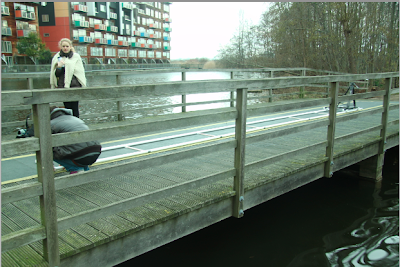With the live footage shot in various locations as reference, we started looking at visual references of various Olympics sports. Firstly I did a rough cut with the live footage using Final Cut Pro in order us to have a good sense of timing and the overall pacing of the video.
I then found a lot of useful clips on the Internet and composited them onto the footage of locations with After Effect. Some of the clips from the Internet were badly shot so when I composite them onto our live footage, the characters would move randomly due to the clip's camera motion.
As a result, I key-framed all the characters throughout the entire video to compensate for all the camera motions contained within the sports clips from the Internet.
Using exported clips as reference, we started drawing various sports on top of the referencing videos frame by frame in order to get the stylistic hand drawn 2D effect, which is more artistic and stylistic comparing to rotoscoping the characters.
We started off by doing different sports separately. I personally drew the discus thrower and the rowing crew, while Reno drew the running woman and the cycling man.
Then we realised that it would keep the drawings more consistant by having one person doing all the black lines and another person filling the characters with white paint. As a result, Reno started to draw all the character outlines and passed them on to me for the white fillings.
The referencing clip of athlete clips on top of our location footage exported from After Effect and then brought into Toon Boom Studio Pro.
The black outlines traced off the referencing clip frame by frame.
The white fillings to give the characters a more animated look and basic texture.
Props like discus, javeline and paddles are then added as a separate layer.
A final layer of green screen is then added behind the drawings in order to make the compositing job easier by keying out the greens for transparency.
Above videos are tests of animation working together with live footage.































